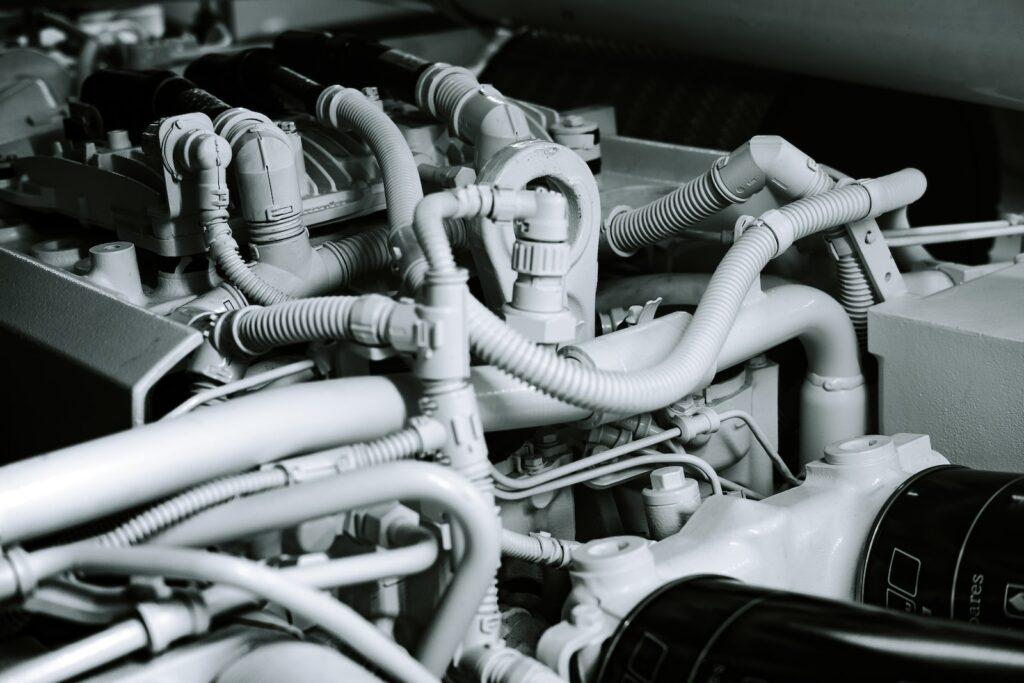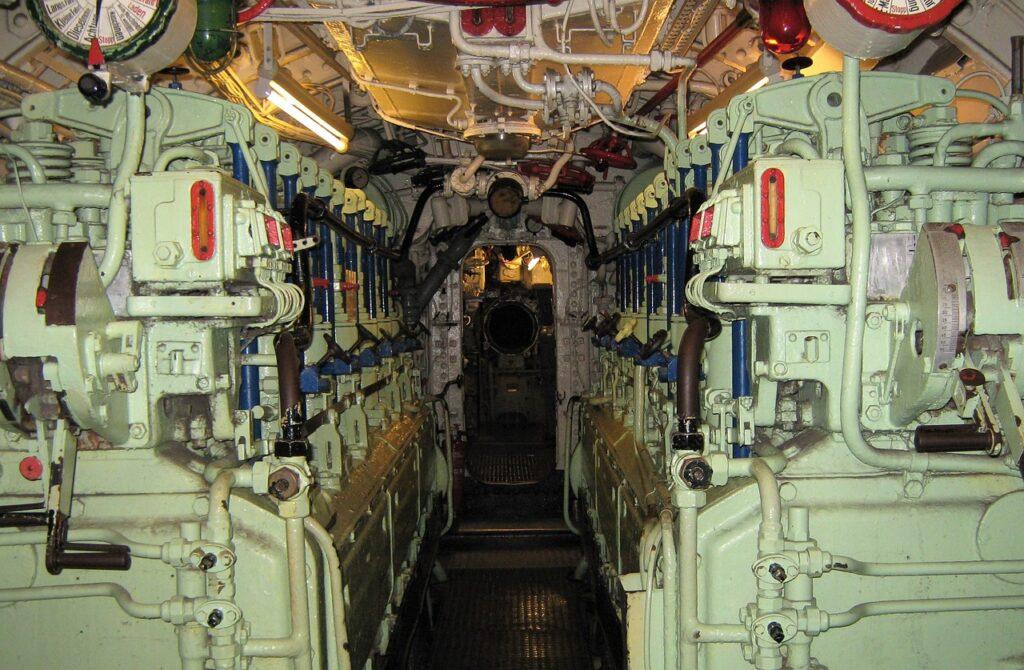How To Remove An Inboard Engine From A Boat
Key Takeaways:
- Clearing obstacles, labelling and disconnecting components such as fuel lines, electrical wiring, exhaust system, cooling lines, and detaching the propeller shaft are crucial preparation steps before commencing the engine removal. All this would significantly ease the process and also help during reinstallation. Preparing necessary tools and safety equipment in advance is crucial.
- Removing and reinstalling the engine from the boat involves using an engine hoist. After unbolting the engine from its mounts, you need to secure chains or straps to the engine’s lifting points and attach the other end to the hoist. The engine is then carefully lifted from the boat. The same procedure is followed during reinstallation, taking care to align the engine correctly with the engine beds and securing it properly.
- Wearing protective gear, using the right tools, and having a backup plan is essential. After reinstallation, it is important to reconnect all disconnected components correctly, following manufacturer instructions, for the engine to function properly. All connections and fuel lines should be checked to ensure they are secure and free from leaks.
You’re about to embark on a thrilling DIY project – removing an inboard engine from your boat. Maybe it’s to replace it with a new one or perhaps you’re getting ready to rebuild the old workhorse. Either way, it’s a job that’s often seen as a challenge, but with the right tools and a detailed plan, you’ll have that engine out before the tide comes in.
How To Remove An Inboard Engine From A Boat in 7 Steps
Removing an inboard engine from a boat – sounds like a mission, doesn’t it? But with the right preparation and some elbow grease, it’s totally doable. So, here’s your game plan:
- Prepare the Area: Clear out any obstacles in and around the boat that may interfere with the engine removal process.
- Disconnect the Engine: This includes fuel lines, electrical wiring, exhaust system, and cooling lines. Remember to label everything as you disconnect.
- Unbolt the Engine: Using a socket wrench, unbolt the engine from its mounts. Having an extra pair of hands can be helpful here.
- Attach the Engine Hoist: Secure chains or strong straps to the engine’s lifting points and attach the other end to the engine hoist.
- Lift the Engine: Carefully raise the engine out of the boat using the hoist. This should be done slowly and carefully to prevent any damage.
- Lower the Engine: Once the engine is clear of the boat, lower it onto a secure surface or an engine stand.
Removing an inboard engine from can be done with the right tools and the help of a few strong people. With the right preparation, this process can be completed quickly and safely. It is important to have the right tools, materials, and a good working knowledge of the engine to ensure that the engine is removed safely and correctly. Before You start make sure You know how to deal with outdrive on a boat.

You’ll need to disconnect all the connections to the engine. We’re talking fuel lines, electrical wiring, the exhaust system, cooling lines – the whole kit and caboodle. Be sure to label everything as you go along, so you know where to reconnect them later. (Trust me, it’s easier than playing “Which wire did this go to?”).
Unbolt the engine from the engine mounts. You’ll probably need a good socket wrench for this, and a friend to keep the engine steady wouldn’t hurt either.
To actually remove the engine from the boat, you’re going to need an engine hoist. Carefully attach the hoist to the engine using chains or strong straps, making sure they’re secured to the engine’s lifting points. Then slowly raise the engine out of the boat.
Steps To Prepare For Removal
Before attempting to remove an inboard engine from a boat, take the necessary steps to prepare the boat and the engine for removal.
Here are the steps to get ready for removing an inboard engine from a boat:
- Disconnect the Battery: Start by isolating the engine electrically to avoid accidental sparks.
- Drain Remaining Fuel: Remove fuel lines, ensuring to safely catch any remaining fuel.
- Detach Propeller Shaft: Disconnect the engine from the propeller shaft — that’s your main power transmitter.
- Remove Exhaust and Cooling Hoses: Be prepared for some water spillage here, it’s perfectly normal.
- Label Connections: Before you start disconnecting cables and hoses, label them for easy reconnection during the engine installation.
- Disconnect Electrical Connections: Remove any wiring connected to the engine, being careful not to damage the cables.
- Remove the Engine Mounts: Loosen the bolts holding the engine in place on the mounts.
- Prepare Lifting Gear: Finally, set up the lifting gear you’ll use to physically remove the engine from the boat.
Depending on the type of engine you will need a variety of tools, such as wrenches, pliers, screwdrivers, and a socket set.
Steps To Remove The Engine
Once the necessary steps have been taken to prepare the boat and engine for removal, the next step is to begin the removal process.
- Safety first. Disconnect the battery. Safety should always be the priority. We don’t want any unexpected sparks flying around, right?
- Empty the engine. Start by draining the engine oil and coolant. You don’t want these spilling out when you remove the engine.
- Disconnect, disconnect, disconnect. You’ll need to disconnect everything attached to the engine. That means fuel lines, exhaust, electrical connections, and cooling lines. Remember to label the wires or snap some pictures before disconnecting them — you’ll thank yourself when it comes time to put everything back together.
- Unbolt the engine from the mounts. Your engine should be free of all connections. The only thing keeping it in place are the mountings. Find the bolts holding the engine to the mounts and remove them. You might need to use some penetrating oil to loosen them up if they’ve been there for a while.
- Lift the engine out. Depending on the size of the engine, you might be able to muscle it out with a couple of strong friends. However, for larger engines, you’ll need an engine hoist. Be sure to lift the engine straight up to avoid damaging anything.
If the boat is on a trailer, check that the trailer is properly secured and that the coupler is locked in place.
Steps To Re-install The Engine
You’re going to position your engine near the bay using the hoist. Slow and steady does it. Once the engine is positioned correctly, lower it gently into the engine bay. Watch out for any hoses, wires or parts that might get crushed or pinched during this process.
Aligning the engine correctly is critical for smooth operation and to avoid damage to your prop shaft or transmission. You’ll need to ensure that the engine mounts line up with the holes in the engine beds. This might require some adjusting and repositioning, so keep your patience hat on.
When the engine is aligned correctly, secure it to the engine beds using bolts and a torque wrench. Ensure each bolt is tightened to the manufacturer’s specifications. Under-tightened bolts can loosen over time and over-tightened bolts can cause damage to the engine beds.
You’ll reconnect all the disconnected components — electrical wiring, fuel lines, exhaust system, cooling system, and anything else that was disconnected when the engine was removed. It’s like putting together a jigsaw puzzle. Each part has its place and needs to be connected correctly for the engine to function properly.
You’re ready to fill the engine with oil and coolant, as per the engine manufacturer’s specifications.

Safety
Safety should always be the top priority when removing an inboard engine from a boat. Taking the necessary steps to ensure the safety of anyone working on the project is essential.
- Wear Protective Gear
- Follow Manufacturer Instructions:
- Use Proper Tools
- Have A Backup Plan
It is also important to follow the manufacturer’s instructions for the installation. This will help to ensure that the engine is installed correctly and safely. Make sure to double-check all the connections and fuel lines to ensure that they are secure and free of leaks.
How do you remove an engine from a yacht
To remove an engine from a yacht, you will need to disconnect the fuel, cooling, oil, and exhaust lines, as well as the transmission, alternator, and starter. After those are disconnected, you will need to unbolt the engine mounts and lift the engine up and out of the boat. Depending on the size of the engine, you may need to use an engine hoist or other lifting device to get the engine out.
Cost to remove boat engine
The cost to remove a boat engine will depend on the size, type, and condition of the engine, as well as the labor costs of the technician performing the removal. In general, most boat engine removals range from $500 to $1,500, depending on the complexity and type of engine. If the engine also has an oil filter, fuel lines, or other components that need to be removed, the cost may be higher. The cost of any additional tools needed for the removal may also add to the total cost.
Is it possible to remove an inboard engine from a boat by myself?
Yes, it’s possible, but it’s certainly a hefty task. You’ll need a good understanding of your boat’s mechanical systems, the right tools, and a lot of patience. Consider seeking professional help or having a knowledgeable friend assist you to make the job safer and easier.
What tools do I need to remove an inboard engine from a boat?
You’ll need a range of tools including an engine hoist to lift and move the engine. Other useful tools include socket wrenches, pliers, screwdrivers, and a torque wrench. A well-lit working area and safety equipment like gloves and eye protection are also important.
What should I do with the engine once it’s removed from the boat?
That depends on why you’re removing it. If you’re planning to repair or rebuild it, you might move it to a clean, well-lit workspace where you can work on it. If you’re replacing the engine, you might want to sell the old one or dispose of it properly according to your local regulations.
Wrap up
Removing an inboard engine from a boat can be a daunting task, but with the right tools and knowledge, it is possible to do it safely and successfully. Taking the necessary steps to prepare the boat and engine for removal, removing the engine, and re-installing it are all important steps in the process. Boat owners can feel confident that they will be able to safely and successfully remove an inboard engine from a boat.
